It’s no secret that medical apps have had a huge impact on modern healthcare, since they provide tools for diagnosis, treatment, and patient management. As these technologies spread further and further, the need for regulatory oversight to make sure they’re safe, effective, and avoid personal injury for their patients becomes greater and greater. In this article, we will discuss how medical apps are regulated, focusing on the roles of regulatory bodies like the FDA, the categories of these apps, compliance requirements, and future trends.
Overview of Regulatory Bodies
FDA (Food and Drug Administration)
In the United States, the Food and Drug Administration (FDA) is the primary regulatory body that oversees medical apps. The FDA’s authority to do this comes from the Federal Food, Drug, and Cosmetic Act (FD&C Act), which mandates that medical devices, including certain mobile apps, must be regulated. The FDA classifies medical devices based on the risks they pose to patients if the app stops working as intended, applying different levels of scrutiny and control.
EMA (European Medicines Agency)
The European Medicines Agency plays a similar role to the FDA, making sure that medical apps meet certain safety and efficacy standards. Other international bodies, like Health Canada and the UK’s Medicines and Healthcare products Regulatory Agency (MHRA), also regulate medical apps within their respective countries.
Categories of Medical Apps
Medical apps are generally categorized into non-medical and medical apps based on their intended use and the risks they pose to users if they stop working as intended.
Non-Medical Apps
Non-medical apps do not qualify as medical devices under their respective regulatory definitions. Some examples include wellness and health education apps. Typically, apps like this don’t need as much regulatory oversight since the risk they pose to users is small.
Medical Apps
Medical apps are defined by their intentions to diagnose, cure, mitigate, treat, or prevent ailments. The FDA states that apps integrating with medical devices, performing patient-specific analysis, or providing treatment recommendations fall under this category and therefore require regulatory oversight.
FDA Regulations and Guidelines
Section 201(h) of the FD&C Act
Under Section 201(h) of the FD&C Act, mobile apps that meet the definition of a medical device are subject to FDA medical app regulation. This includes apps that act as accessories to regulated medical devices like a heart rate monitor, transform mobile platforms into regulated medical devices like a lab information management system, or perform patient-specific diagnoses or treatment recommendations. Additionally, in 2015, the FDA issued guidance focusing on apps that pose the greatest risk to patients if they stop working as intended. This subset of apps includes many of the apps meeting the definition of medical devices mentioned above.
Categories of Medical Devices
The FDA medical app regulation process provides medical device classification into three classes based on risk:
- Class I: General Controls – Minimal patient risk, may not require FDA review.
- Class II: General Controls and Special Controls – Moderate patient risk.
- Class III: General Controls and Premarket Approval – High patient risk.
Regulatory Processes and Medical Device Classification
Premarket Notification (510(k))
The FDA 510(k) process requires manufacturers to demonstrate to the FDA that their device is safe and effective, which is shown by making sure it’s substantially equivalent to a device already being legally marketed. This process is typically used for moderate-risk devices.
Premarket Approval (PMA)
PMA is required for Class III high-risk devices. It is the strictest type of FDA regulatory process, involving a rigorous review of clinical data to ensure the device is safe and effective.
De Novo Classification
The De Novo medical device pathway is used for novel medical devices, like mobile medical apps, without a predicate. It classifies novel medical devices for which general controls provide enough reassurance of their safety and effectiveness. This way, the De Novo classification allows for a risk-based classification and provides a pathway to market for innovative technologies.
Compliance Requirements
Data Privacy and Security
Medical apps must comply with data privacy regulations like HIPAA, ensuring that patients’ information is protected. HIPAA compliance apps typically implement encryption, secure data transfer, and other measures to protect patients’ sensitive data.
Quality and Performance Standards
When dealing with the FDA medical app regulation process, developers must prove the safety and effectiveness of their app. This includes rigorous testing, continuous monitoring, and fixing any emerging issues or vulnerabilities via regular, consistent updates.
Challenges and Considerations
Technological Advancements
Mobile health technology is innovating at a rapid pace, and that makes it harder for those handling mobile health app oversight to keep up with new developments and keep their regulations comprehensive and up to date.
Interoperability
Ensuring that medical apps can seamlessly integrate with existing healthcare systems is an important part of how they work and how they do their jobs. Maintaining interoperability at this level requires adherence to interoperability standards and collaboration with healthcare providers.
Global Harmonization
Navigating different digital health regulations and requirements across several countries can be complicated for developers who want their apps in a global market. Harmonization of regulations and standards can make breaking into the market and remaining compliant with digital health regulations easier.
Future Trends and Developments
Machine Learning and AI in Medical Apps
Machine learning and AI in medical apps have the potential to make diagnostics more accurate and individualize treatment plans. As these technologies evolve, the frameworks for digital health regulations will need to evolve to address new risks and maintain safety.
Blockchain for Data Security
The potential of blockchain technology as a solution for ensuring data integrity and security is also quite promising. By decentralizing data storage and incorporating advanced health app data encryption, blockchain can defend patient information from cyber threats.
The Impact of FDA Medical App Regulation
FDA medical app regulation is essential for keeping medical apps safe and effective. The FDA and other regulators applying strict standards to protect patients makes them a critical tool for this kind of regulation. As technology continues to advance, digital health regulations and frameworks must advance with them to stay on top of new challenges and opportunities. Through robust regulation and continuous innovation, medical apps can continue to improve the healthcare process and patient outcomes.




